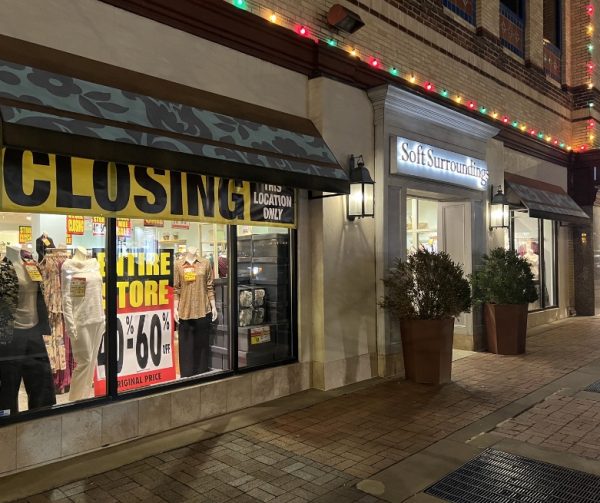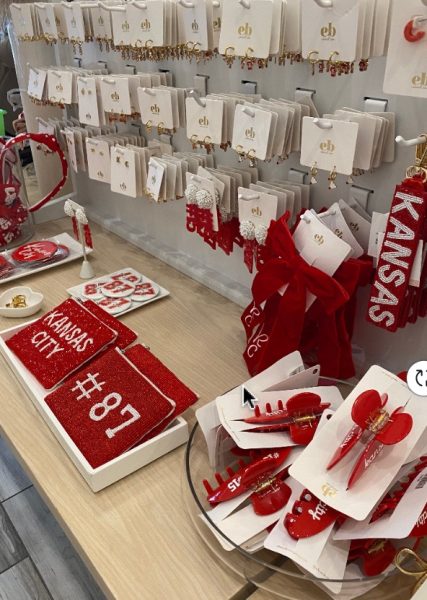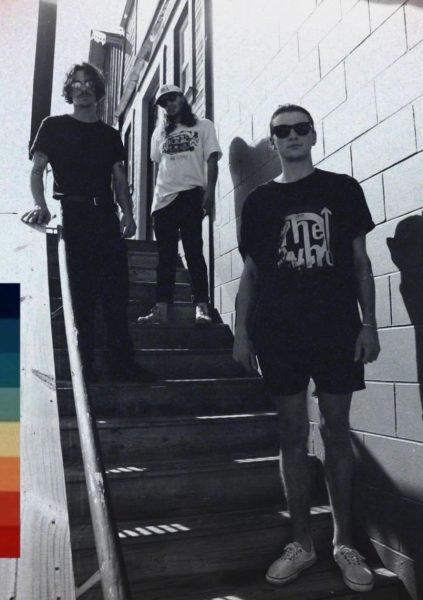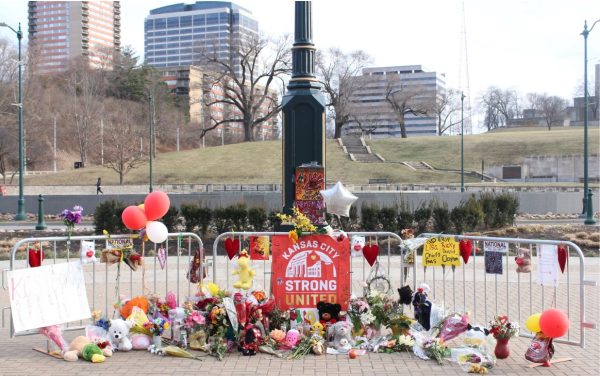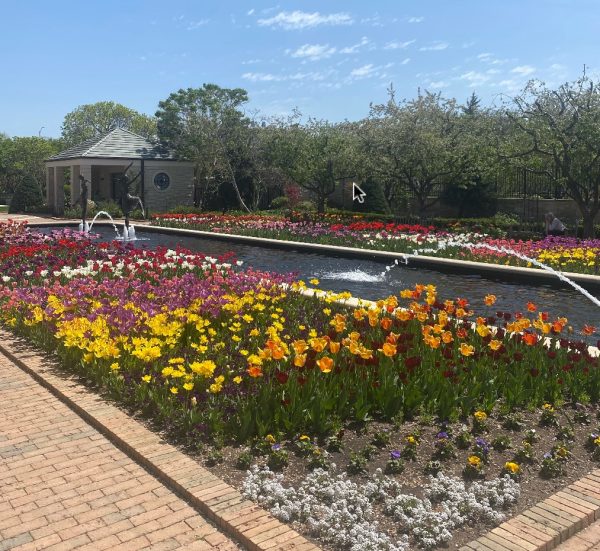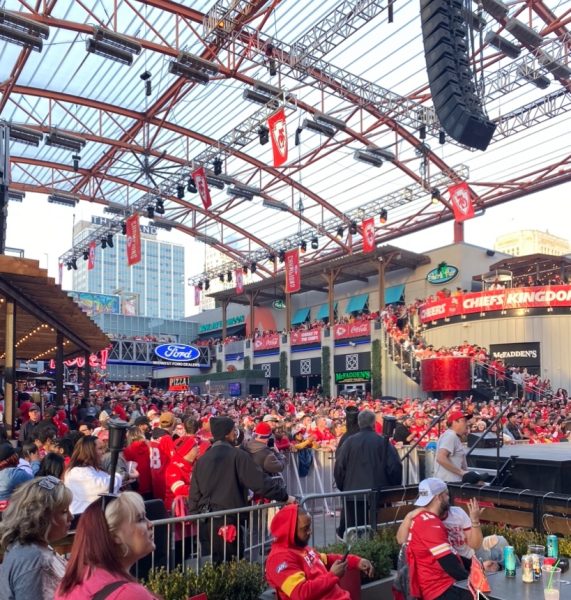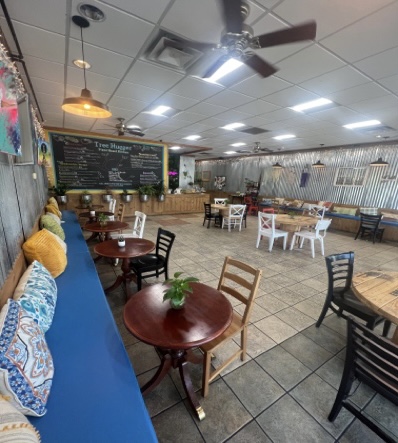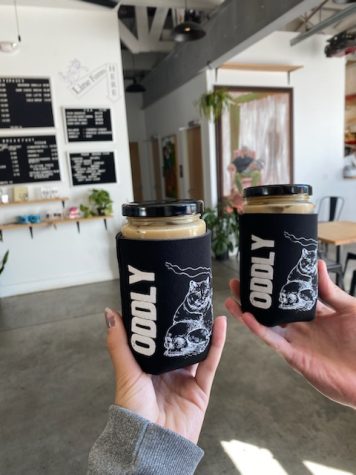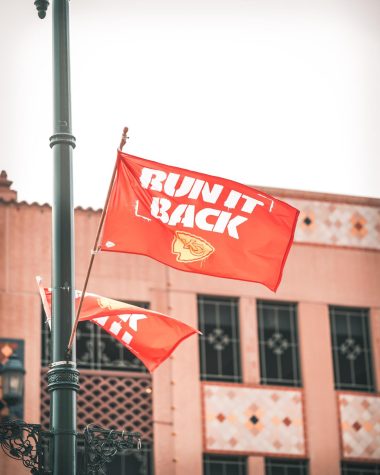Troost Avenue: A great divide decreasing
November 13, 2018
Rockhurst students, whether from Kansas City or elsewhere, have likely noticed the “great divide” running alongside the urban campus.
Troost Avenue is notorious for delineating the “rough part of town” of east Kansas City, a north-south marker that practically separates one side of the city from the other. As Shannon McAuliffe, ’18, said, “[Troost] is a dividing line.”
But for McAuliffe and many other Rockhurst students, living here has “opened their eyes to the east” part of Kansas City. In a way, Rockhurst provides a space of convergence for both sides of Troost, and students are aware of this.
The complicated history behind Troost Avenue continues to affect residents and visitors to the area. One resident, who has lived in the neighborhood since the 1920s, recalled the changes over the decades saying, “people were friendlier.” You knew all your neighbors, she added, it did not matter what color of skin they had. The 49/63 neighborhood — extending from 49th Street to 63rd Street — welcomed people of any demographic, unlike nearly every other neighborhood along the Troost line.
The origin of this separation can be traced back to two Kansas City men from the beginning to mid-20th century, J.C. Nichols and Bob Wood. Tanner Colby’s 2012 book “Some of My Best Friends Are Black” explores some of the reasons why Kansas City fell victim to such a racial divide.
Nichols, who Colby called arguably one of the most influential real estate developers in the United States, encapsulated the “American dream” for families. He did so by creating suburban developments that allowed for home personalization and a safe place for white families to raise their families. This created a real estate mantra that relocated white families into the suburbs, and marginalized black families away from his preferred clientele.
Wood, conversely, utilized scare tactics to drive white families into selling their properties for ridiculously low prices for fear of racial integration within the neighborhoods. The real estate agent, or “hustler” as Colby describes him, then turned around and sold these properties to black families at a great profit.
The black families moving into predominantly white neighborhoods gave fuel for Wood to continue scaring the white families out of the neighborhoods. This scare tactic is called “blockbusting” — quite literally breaking up the neighborhoods, block by block. Colby emphasizes how the tactic was utilized from the 1950s through the 1970s.
As part of the Troost community, Rockhurst has aimed to embody inclusion and strives for diversity through its recent campus climate study, which spurred this response from the university: “Embarking on this campus-wide assessment is further evidence of Rockhurst’s commitment to ensuring that all members of the community live in an environment that nurtures a culture of inclusiveness and respect.”
Being an active part of the neighborhood is an important element for this effort.
Additionally, as stated in the university’s website, “Rockhurst University recognizes that diversity enriches all aspects of university life and is committed to providing opportunities for engaging interactions among diverse individuals, understanding that these interactions allow people to identify commonalities, appreciate differences, and find greater unity.”
With future endeavors Rockhurst has planned, including around the campus climate study, the success of these efforts will become more apparent as the social, economic and racial divides become more blurred along Troost Avenue.
This story was originally written in the spring semester of 2018.
Update: There are other establishments and entities in Kansas City that are helping the Avenue thrive.
Interested in joining the Sentinel staff? Reach out to our Editor, Kori Hines, at [email protected] to see how you can get involved.

